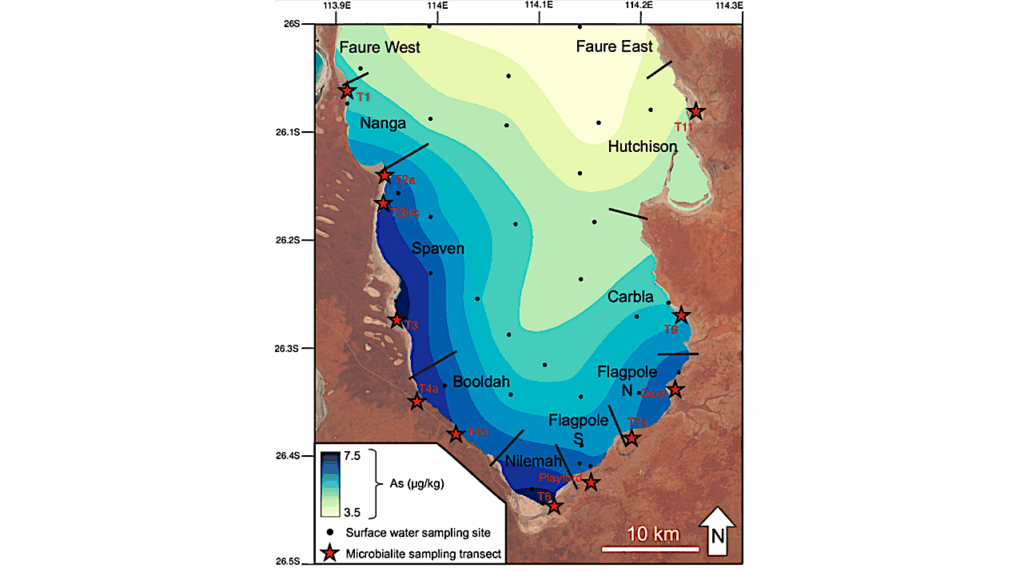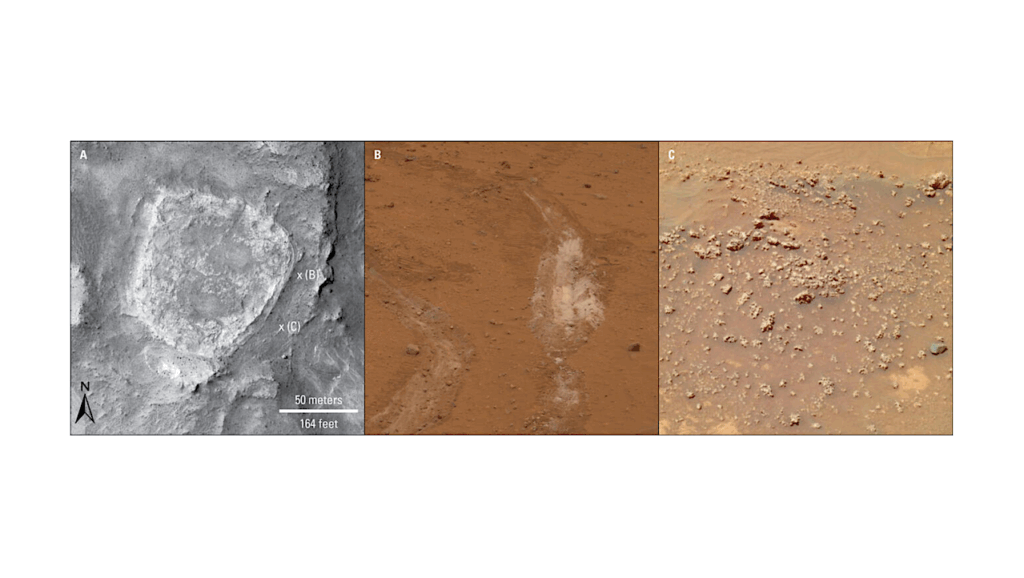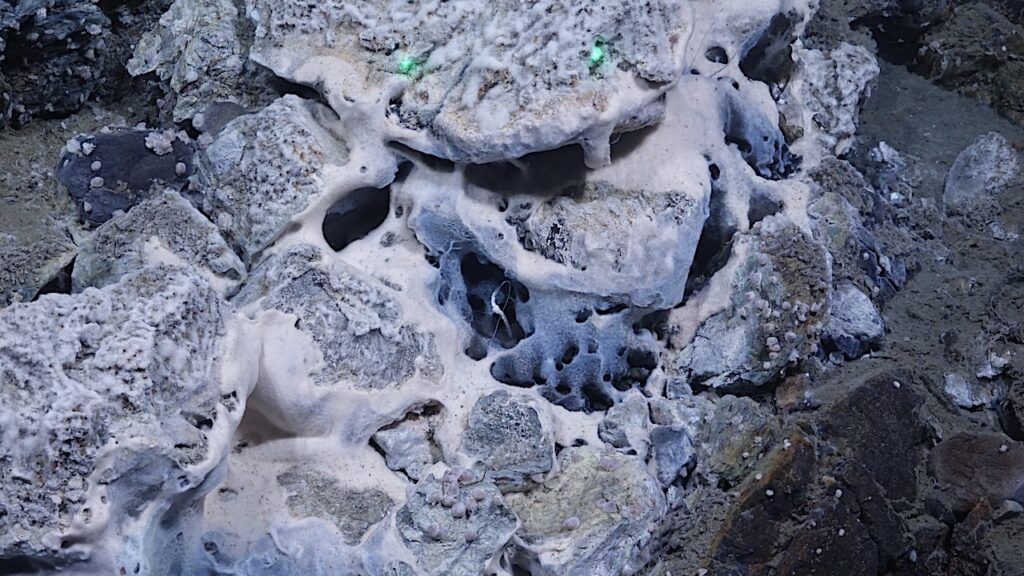Glint From Ice Particles In Earth's Atmosphere Could Be Used To Study Exoplanets

One million miles from Earth, a NASA camera is capturing unexpected flashes of light reflecting off our planet.
The homeward-facing instrument on NOAA’s Deep Space Climate Observatory, or DSCOVR, launched in 2015, caught hundreds of these flashes over the span of a year. NASA’s Earth Polychromatic Imaging Camera (EPIC) instrument aboard DSCOVR is taking almost-hourly images of the sunlit planet from its spot between Earth and the Sun. In a new study, scientists deciphered the tiny cause to the big reflections: high-altitude, horizontally oriented ice crystals.
“The source of the flashes is definitely not on the ground,” said Alexander Marshak, DSCOVR deputy project scientist at NASA’s Goddard Space Flight Center in Greenbelt, Maryland, and lead author of the new study in Geophysical Research Letters, a journal of the American Geophysical Union. “It’s definitely ice, and most likely solar reflection off of horizontally oriented particles.”
Detecting glints like this from much farther away could be used by other spacecraft to study exoplanets, Marshak said. He is now investigating how common these horizontal ice particles are and whether they’re common enough to have a measureable impact on how much sunlight passes through the atmosphere. If so, it’s a feature that could be incorporated into computer models of how much heat is reaching and leaving Earth, he said. Watch a video of the glints captured by DSCOVR at https://www.youtube.com/watch?v=YN4aSHc0n0w&feature=youtu.be
Spotting Bright Flashes
Marshak first noticed light flashes occasionally appearing over oceans as he looked through daily EPIC images. Investigating them further, Marshak and his colleagues found similar reflections from our pale blue dot caught the attention of astronomer Carl Sagan in 1993. Sagan was looking at images taken by the Galileo spacecraft, which launched in 1989 to study Jupiter and its moons. During one if its gravitational-assist swings around Earth, Galileo turned its instruments on this planet and collected data. Sagan and his colleagues used that to test a key question: whether spacecraft could detect signatures of life from afar.
“Large expanses of blue ocean and apparent coastlines are present, and close examination of the images shows a region of [mirror-like] reflection in ocean but not on land,” they wrote of the glints (http://www.nature.com/nature/journal/v365/n6448/abs/365715a0.html).
Flashes of light reflected off oceans — like those referenced by Sagan — could have a simple explanation, Marshak said: sunlight hits a smooth part of an ocean or lake, and reflects directly back to the sensor, like taking a flash-picture in a mirror.
But when the scientists took another look at the Galileo images, they saw something Sagan and his colleagues apparently missed — bright flashes of light over land as well. As the contact listed on the website that posts all EPIC images, Marshak started getting emails from people curious about what the flashes were.
“We found quite a few very bright flashes over land as well,” he said. “When I first saw it I thought maybe there was some water there, or a lake the Sun reflects off of. But the glint is pretty big, so it wasn’t that.”
Instead, he and his colleagues thought of water elsewhere in the Earth system: ice particles high in the atmosphere. They then conducted a series of experiments to confirm the cause of the distant flashes.
First, they cataloged all prospective sunlight glints over land in images from the EPIC camera and found 866 bursts between DSCOVR’s launch in June 2015 and August 2016.
They reasoned that if these 866 flashes were caused by reflected sunlight, they would be limited to certain spots on the globe — spots where the angle between the Sun and Earth is the same as the angle between the spacecraft and Earth. When they plotted the locations of the glints with those angles, given Earth’s tilt and the spacecraft’s location, the two matched.
This helped confirm that it wasn’t something like lightning causing the flashes. “Lightning doesn’t care about the Sun and EPIC’s location,” Marshak said.
Another feature of the EPIC data helped confirm that the flashes were from a high altitude, not simply water on the ground. Two channels on the instrument are designed to measure the height of clouds, and when the scientists went to the data they found high cirrus clouds, 5 to 8 kilometers (3 to 5 miles) where the glints were located.
Reference: “Terrestrial Glint Seen from Deep Space: Oriented Ice Crystals Detected from the Lagrangian Point,” Alexander Marshak (NASA Goddard Space Flight Center, Greenbelt, Maryland, U.S.A.), Tamás Várnai (NASA Goddard Space Flight Center, Greenbelt, Maryland, U.S.A., and University of Maryland Baltimore County, Baltimore, Maryland, U.S.A.) & Alexander Kostinski (Michigan Technological University, Houghton, Michigan, U.S.A.), 2017 May 15, Geophysical Research Letters [http://onlinelibrary.wiley.com/doi/10.1002/2017GL073248/abstract, preprint (PDF): http://onlinelibrary.wiley.com/doi/10.1002/2017GL073248/pdf].
The American Geophysical Union is dedicated to advancing the Earth and space sciences for the benefit of humanity through its scholarly publications, conferences, and outreach programs. AGU is a not-for-profit, professional, scientific organization representing 60,000 members in 137 countries.
The DSCOVR mission is a partnership between NASA, the National Oceanic and Atmospheric Administration (NOAA) and the U.S. Air Force, with the primary objective to maintain the nation’s real-time solar wind monitoring capabilities, which are critical to the accuracy and lead time of space weather alerts and forecasts from NOAA.








